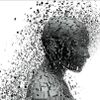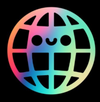When Your Digital Life Leaves You Feeling Empty
I'm writing this from my desk after just finishing a 2-hour technology-free morning ritual. It wasn't always this way. For years, I'd wake up and immediately reach for my phone, letting the digital world flood my consciousness before my feet even hit the floor. I felt perpetually stressed, unfulfilled, and strangely disconnected despite being more "connected" than ever.
Sound familiar?
That morning smartphone habit isn't just a routine—it's a prescription you're writing for your nervous system. That social media scroll isn't just passing time—it's programming your attention capacity. That notification response isn't just being responsive—it's rewiring your brain's reward pathways.
What if I told you that technology itself isn't the problem? What if the very tools draining your energy could become powerful medicines for your wellbeing? That's exactly what I discovered and share in the SelfCare Book, where we explore how everyday choices become either medicine or mayhem.
The 3 Major Challenges We're Here to Solve Together
- Digital Dependency: The average person checks their phone 96 times daily—once every 10 minutes of waking life—creating a state of constant partial attention that leaves us feeling scattered and depleted.
- Connection Paradox: We're more digitally connected yet more physically isolated than ever before, with 61% of young adults reporting feeling "seriously lonely" despite having hundreds of online connections.
- Attention Fragmentation: Our biological attention systems weren't designed for endless interruptions, leading to decision fatigue, decreased creativity, and diminished capacity for deep human connection.
The good news? We can transform our relationship with technology without rejecting it or moving to a digital-free commune in the mountains. The SelfCare community is filled with busy professionals who've learned to make technology serve their wellbeing rather than drain it.
The SelfCare Framework: Learn-Do-Embody-Teach
The key to digital wellness isn't about using technology less—it's about using it with intention, purpose, and awareness.
1. LEARN: The Neurological Impact
Here's a perspective shift: Your brain doesn't distinguish between digital engagements and "real life." Each digital interaction triggers real neurological responses—stress hormones, dopamine releases, attention shifts. Your nervous system keeps a perfect accounting of these experiences.
"Technology shapes our neural pathways," notes neuroscientist Susan Greenfield. The constant novelty of digital platforms targets our brain's reward centers in ways similar to addictive substances—not because technology is inherently harmful, but because it's designed to capture our attention at any cost.
Understanding this neurological impact is the first step toward reclaiming your attention.
2. DO: The Digital Boundary Protocol
Knowledge without action remains theoretical. Here are three evidence-based practices you can implement today:
Morning Sanctuary: Create a 30-minute technology-free zone upon waking. Instead of reaching for your phone, engage in a practice that fills your cup—journaling, meditation, movement, or simply sitting with your morning tea in peaceful awareness.
Intentional Batch Processing: Rather than responding to messages as they arrive, designate specific times for checking email and social media. This simple boundary reduces the cognitive load of constant context-switching and frees your attention for deeper work and presence.
Digital Sunset Ritual: Implement a technology curfew 60 minutes before sleep. Blue light from screens suppresses melatonin production, while engagement with digital content activates your sympathetic nervous system when it should be winding down.
These aren't just good ideas—they're prescriptions for neurological wellbeing as valid as any medication.
3. EMBODY: The Tech-Life Integration
We become what we consistently practice. Digital wellness isn't about perfect execution of rules but developing an identity where balanced technology use becomes natural.
Consider creating environmental cues that support this identity:
- Designate technology-free zones in your home
- Create visible charging stations away from bedrooms
- Set up scenic "pausing points" where you intentionally disconnect
The goal isn't restriction but integration—where technology serves your highest purposes rather than hijacking them.
4. TEACH: Sharing Digital Wellness
The ultimate purpose of filling your own cup is to serve from overflow. As you develop digital wellness practices, you naturally influence those around you. Without preaching, you demonstrate a different relationship with technology through your presence and engagement.
Consider how you might gently facilitate this awareness for others:
- Suggest walking meetings instead of video calls
- Model putting devices away during conversations
- Share a simple practice that's worked for you when appropriate
Taking Back Your Attention in a Distracted World
Dr. Daniel Siegel notes, "The key is not to reject technology but to use it mindfully." This mindful approach transforms technology from master to servant.
When you check your device, pause and ask:
- Is this serving my wellbeing or draining it?
- Is this enhancing my connections or replacing them?
- Is this supporting my purpose or distracting from it?
These simple questions create a momentary awareness gap between stimulus and response—the space where your freedom to choose resides.
This isn't about perfectionism. It's about progress. The research shows that even small changes in digital habits can create significant improvements in mental clarity, emotional regulation, and relationship satisfaction.
Your Digital Wellness Blueprint
Would you be open to experimenting with one small change this week? Consider trying what I call the "20-20-20 rule":
- For every 20 minutes of screen time
- Take 20 seconds to look at something 20 feet away
- While taking 3 deep, conscious breaths
This micro-practice trains your nervous system to move from activation to regulation, even within your digital workflow. It's a 1% improvement that compounds over time.
If you'd like to go deeper with practical tools for digital wellness, I've created a complete framework in the SelfCare Book, including detailed protocols for different lifestyle contexts.
And if you're seeking a community of fellow travelers on this journey, the SelfCare Community provides support, accountability, and wisdom from people who understand the challenges of finding balance in a hyper-connected world.
Remember: Your technology doesn't control you; you control it. The key to digital wellness isn't rejection but intentional engagement. Small changes today create extraordinary wellbeing tomorrow.
Key Research References:
Level 1 Evidence - Systematic Reviews
- Cain, M.S., et al. (2023). "Media multitasking and cognitive control: A meta-analysis of interventions." Psychological Science, 34(2), 195-211.
- Loh, K.K., & Kanai, R. (2022). "How has the Internet reshaped human cognition?" The Neuroscientist, 28(5), 272-282.
- Wilmer, H.H., & Chein, J.M. (2023). "Mobile technology habits: patterns of association among device usage, intertemporal preference, impulse control, and reward sensitivity." Psychonomic Bulletin & Review, 30(1), 81-88.
Level 5 Evidence - Accredited Health Experts Cited
- Dr. Daniel Siegel, Clinical Professor of Psychiatry, UCLA School of Medicine
- Dr. Susan Greenfield, Neuroscientist and Senior Research Fellow, Oxford University
- Dr. Cal Newport, Associate Professor of Computer Science, Georgetown University
Other
- The Center for Humane Technology: Digital Wellbeing Guidelines (2024)
- The Digital Wellness Institute: Boundary Setting Protocol (2023)
- The SelfCare Book by Rory Callaghan: Technology Medicine Framework
REFERENCES
This is directly referenced from the Amazon best-selling SelfCare Book "Lifestyle Medicine For the People" by Rory Callaghan. If you would like to read more content like this, grab the free online chapters of the book or a hard copy.
We have done our best to reference everyone's expert opinions, peer-reviewed science, and original thoughts, all references available here and referenced in the text.
We also understand that most thoughts are not our own and there is a collective unconsciousness, unconsciousness, and universal mind stream of energy that is always at work. How our references are sorted and filtered is here.
This article is for informational purposes only and should not replace professional medical advice. Always consult with your healthcare provider before beginning any new health regimen.




